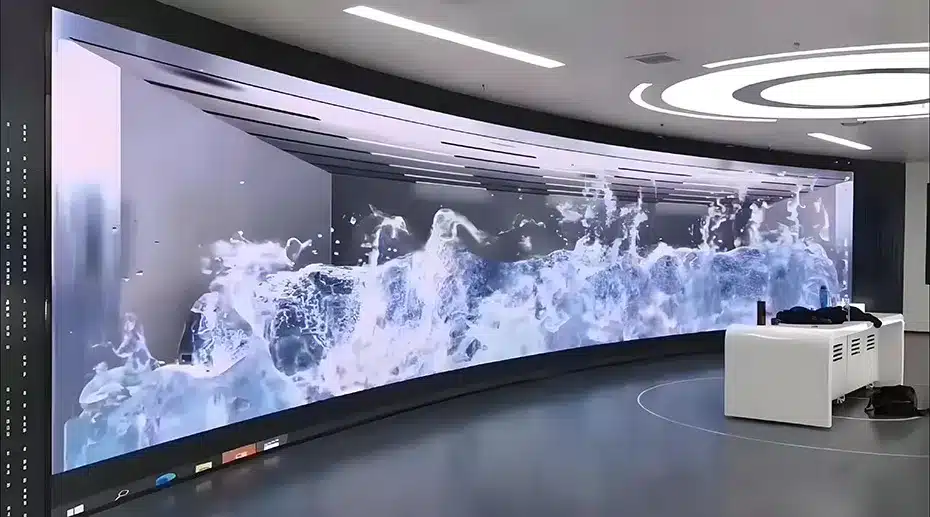
Complete Guide to LED Display Installation: From Modules to Large Screens 🎬
Installing an LED display might seem like a complex process, but breaking it down step by step makes it manageable. Whether you’re setting up an indoor commercial display, a conference room screen, or a large digital billboard, this guide will walk you through the essential installation process—from assembling the frame to final screen calibration.
📌 Let’s get started!
🛠 1. Preparing the Frame Structure
Before installing LED modules, you need a solid frame to support the display.
📌 Materials Needed:
- 4×4 square steel bars (for the T-frame structure)
- 2×2 square steel bars (for additional support)
- Welding tools
📌 Steps to Build the Frame:
- Weld a T-frame using 4×4 square steel bars based on the required dimensions.
- Add support bars with 2×2 square steel bars inside the main frame.
- Ensure 90-degree angles using a steel square ruler for precise welding.
- Attach the frame to the wall or mounting structure using steel hooks or brackets.
✔ Pro Tip: Leave a 10mm ventilation gap around the edges to improve heat dissipation.
⚡ 2. Installing Power Supply, Control Cards, and LED Modules
Once the frame is secured, it’s time to install the power supply and control system.
📌 Power Supply Installation:
✅ Use factory-recommended power connections (5V output) to avoid damaging components.
✅ Each power cable can connect to four LED modules.
✅ Use 2.5mm² soft copper wire for 220V connections across power units.
✅ Ensure proper grounding to prevent static damage.
📌 Installing Control Cards:
- For synchronous control, install receiver cards at designated locations.
- Connect network cables from the computer to the first receiver card, then daisy-chain the connection through the other cards.
- Power each receiver card using a nearby power unit.
✔ Pro Tip: Always follow the system wiring diagram provided by the LED manufacturer.
🔗 3. Connecting the Receiver Cards & Modules
Now it’s time to connect the LED modules to the receiver cards.
📌 Connection Process:
✅ Each receiver card connects to three rows of LED modules.
✅ Use network cables to link multiple receiver cards in sequence.
✅ Ensure the first receiver card is connected to the computer’s network port.
✅ Follow the arrow markings on LED modules for correct signal flow.
✔ Pro Tip: Label your network connections to avoid confusion during setup.
📦 4. Installing the LED Modules
With the frame and power supply ready, it’s time to attach the LED modules.
📌 Recommended Installation Method:
📌 Start from the bottom center and work outward to the sides.
📌 Ensure modules are aligned horizontally and vertically.
📌 If alignment issues arise, adjust the module positions carefully.
📌 Secure modules using locking clips and check signal cables.
✔ Pro Tip: Working from the center outward helps split the workload, making installation faster and more precise.
🖥 5. Calibration & Final Testing
After the LED modules are installed, it’s time for calibration and troubleshooting.
📌 Testing Procedure:
✅ Power on the system and check for color uniformity (Red, Green, Blue, White).
✅ Use the control card test button to perform an initial diagnostic.
✅ Verify the network communication between the computer and LED screen.
✅ Adjust brightness, contrast, and refresh rate for optimal display quality.
✔ Pro Tip: If you find any dead pixels or misalignment, fix them immediately before proceeding with the final setup.
🚀 Conclusion: A Successful LED Installation!
By following these steps, you can successfully install an LED display—whether for commercial advertising, conference rooms, control centers, or entertainment venues.
🔹 Key Takeaways:
✔ Properly align and secure the frame for durability.
✔ Use correct power connections to avoid short circuits.
✔ Follow step-by-step module installation to ensure smooth signal flow.
✔ Calibrate and test before the final handover.
📢 Need More LED Display Solutions?
💡 Looking for expert installation guides, LED components, or troubleshooting help? Subscribe for more LED industry insights and professional resources!
📩 Have questions about LED displays? Drop a comment below! 🚀